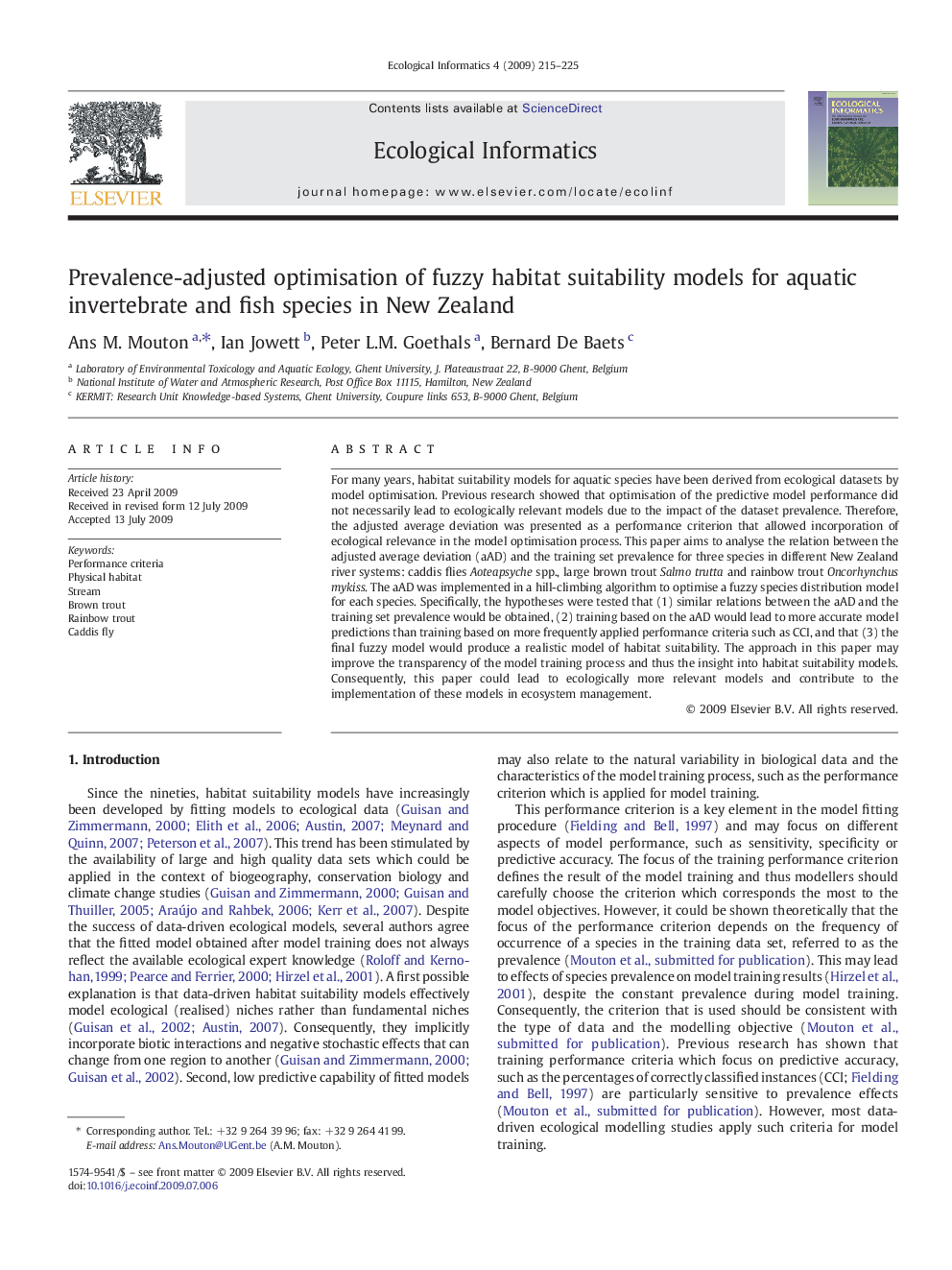| Article ID | Journal | Published Year | Pages | File Type |
|---|---|---|---|---|
| 4375228 | Ecological Informatics | 2009 | 11 Pages |
For many years, habitat suitability models for aquatic species have been derived from ecological datasets by model optimisation. Previous research showed that optimisation of the predictive model performance did not necessarily lead to ecologically relevant models due to the impact of the dataset prevalence. Therefore, the adjusted average deviation was presented as a performance criterion that allowed incorporation of ecological relevance in the model optimisation process. This paper aims to analyse the relation between the adjusted average deviation (aAD) and the training set prevalence for three species in different New Zealand river systems: caddis flies Aoteapsyche spp., large brown trout Salmo trutta and rainbow trout Oncorhynchus mykiss. The aAD was implemented in a hill-climbing algorithm to optimise a fuzzy species distribution model for each species. Specifically, the hypotheses were tested that (1) similar relations between the aAD and the training set prevalence would be obtained, (2) training based on the aAD would lead to more accurate model predictions than training based on more frequently applied performance criteria such as CCI, and that (3) the final fuzzy model would produce a realistic model of habitat suitability. The approach in this paper may improve the transparency of the model training process and thus the insight into habitat suitability models. Consequently, this paper could lead to ecologically more relevant models and contribute to the implementation of these models in ecosystem management.
